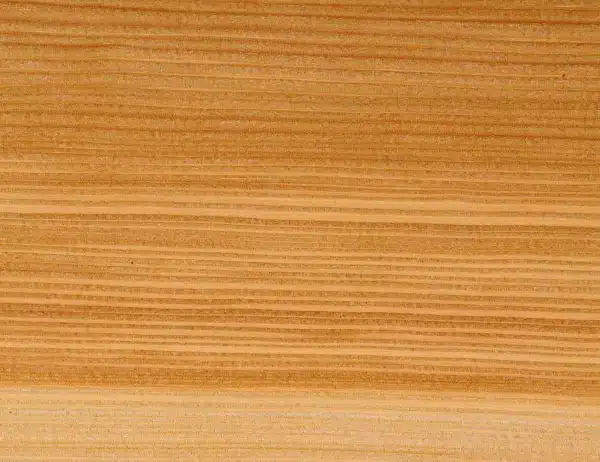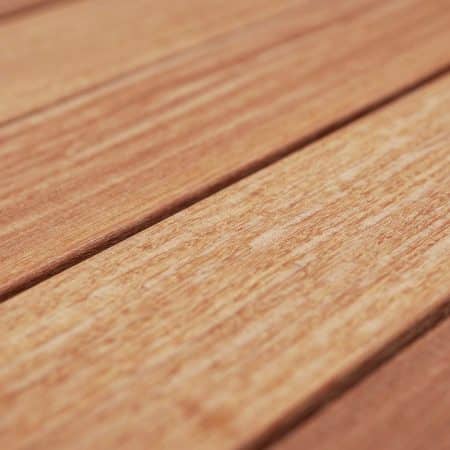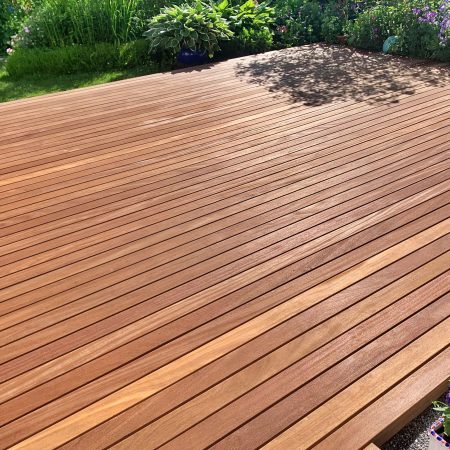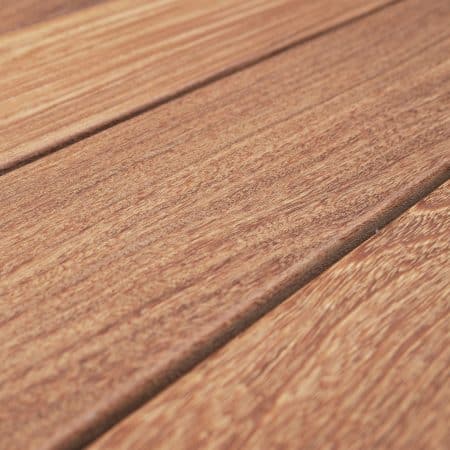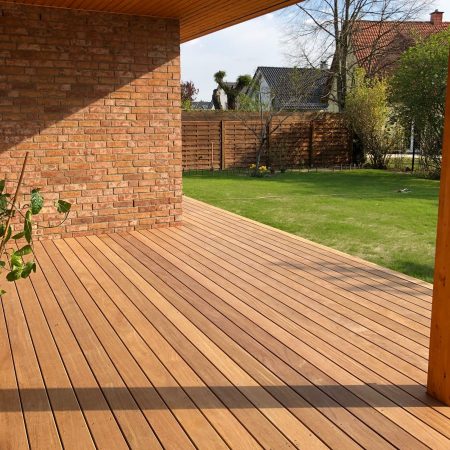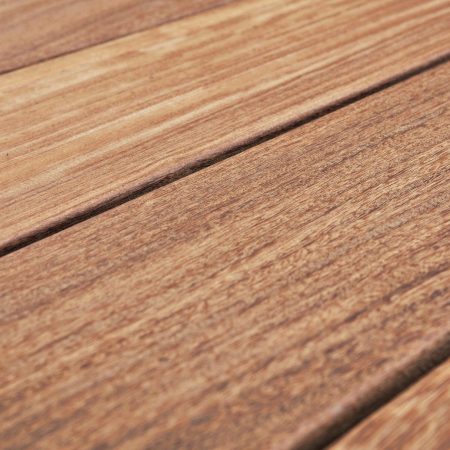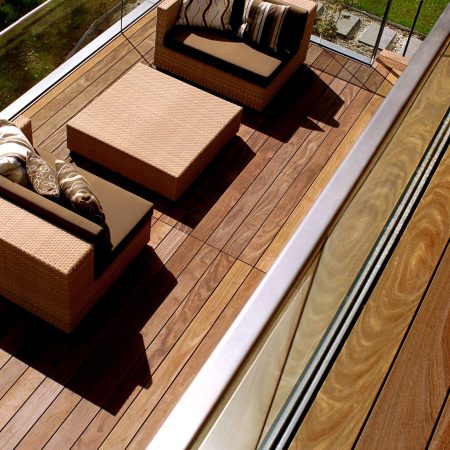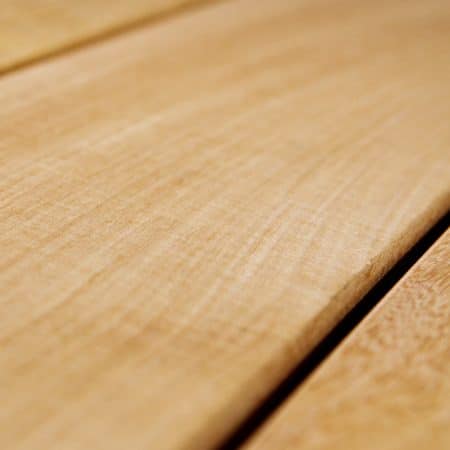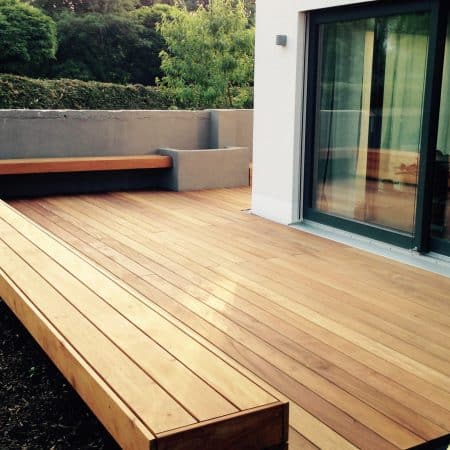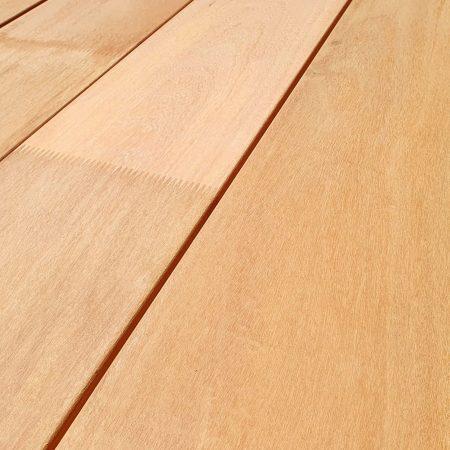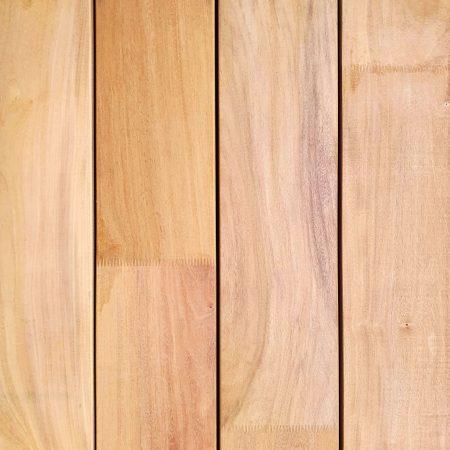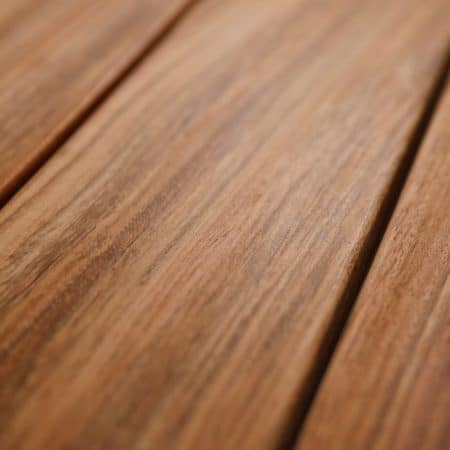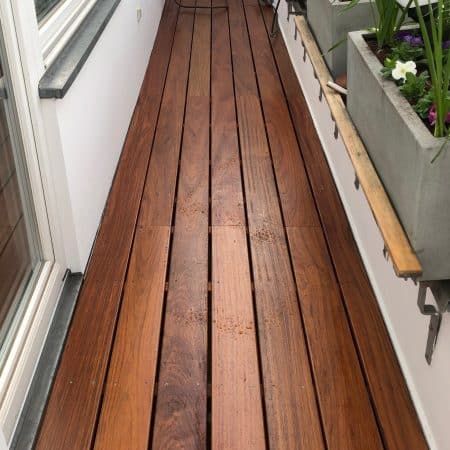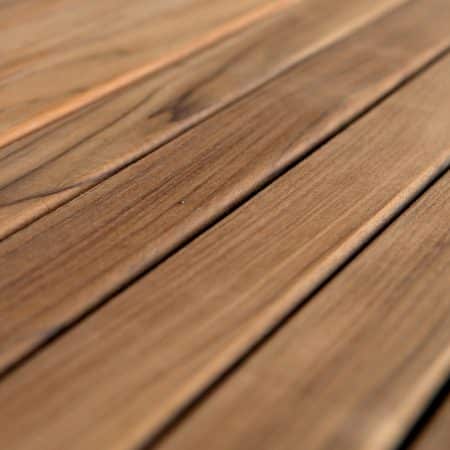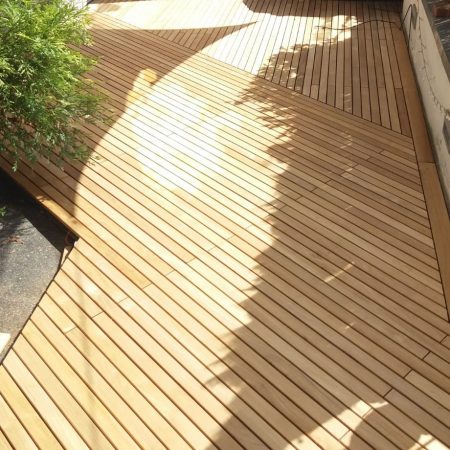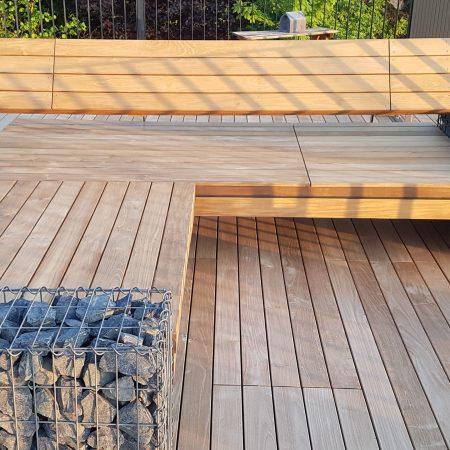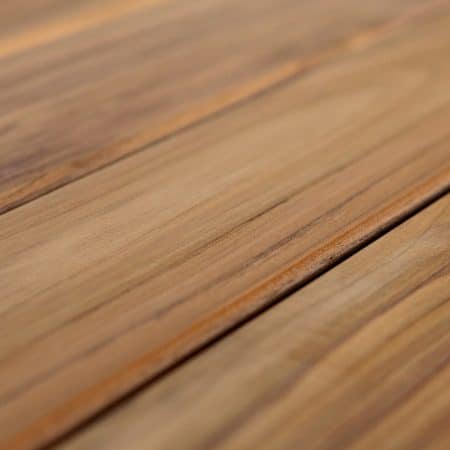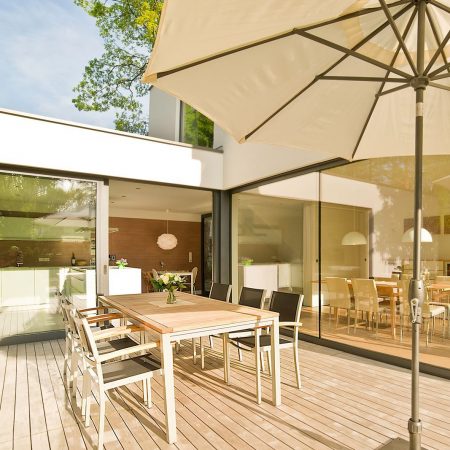| Origin |
Siberia |
| durability class |
3-4 |
| wood color |
Heartwood red-brown, sapwood light yellow |
| Usage |
Terrace boards, parquet floors |
The Siberian larch (Larix sibirica), a species of pine tree, is native to Russia and Mongolia and is an important forest tree. It forms the tree line in Siberia and is rare in Europe. The tree species prefers a continental climate, is light-requiring and grows on various soils up to 2.400 meters above sea level. Siberian larch, part of mixed stands, has low requirements for warmth, moisture and soil quality. The wood, known for its quality, plays an important role in the timber trade. Fast growing with a straight trunk and flexible needles, it is used for decking, parquet flooring and general timber construction, such as profiled timber. Due to its economic importance, it is successfully imported into Germany.
The straight trunk ends in an oval to pyramidal crown. Growing quickly, it reaches peak growth after 30 years and can live up to 500 years. The deep taproot penetrates up to 1,5 meters into the ground. The bark varies from hairy on young branches to gray and deeply cracked on older trunks. The reddish-brown heartwood is durable, heavy and shows clearly visible annual rings. The flexible needles are light green and fall off in winter. Cone production reaches its maximum at 30 to 40 years. Mature cones are 10 to 50 millimeters long and light brown.
The flavonoid taxifolin, obtained from larch trunks, has positive effects such as vasodilating, vasodilating, blood pressure lowering and antioxidant. Used medicinally, it offers wide health benefits.
Source: Wikipedia
ab 6,10 €
Cumaru decking, FSC 100%
Price from: €70 per m2, resistance class: 1
Advantages: ✓ best durability ✓ particularly robust and scratch-resistant
Disadvantages: ✗ partly rough surface ✗ high power development
Tip: Sand the floorboards after they have been exposed to the weather for the first time.
ab 8,75 €
Cumaru decking, FSC 100%
Price from: €70 per m2, resistance class: 1
Advantages: ✓ best durability ✓ particularly robust and scratch-resistant
Disadvantages: ✗ partly rough surface ✗ high power development
Tip: Sand the floorboards after they have been exposed to the weather for the first time.
ab 11,50 €
Cumaru decking, FSC 100%
Price from: €70 per m2, resistance class: 1
Advantages: ✓ best durability ✓ particularly robust and scratch-resistant
Disadvantages: ✗ partly rough surface ✗ high power development
Tip: Sand the floorboards after they have been exposed to the weather for the first time.
ab 9,10 €
Garapa decking boards, FSC 100%
Price from: €65 per m2, resistance class: 1-2
Advantages: ✓ smooth surface ✓ homogeneous, light color
Disadvantages: ✗ Substances containing iron lead to discoloration ✗ Unscrewed tends to warp
Tip: Patio cleaning removes discoloration and
Professional interim storage avoids delay.
ab 9,80 €
Garapa decking boards, FSC 100%
Price from: €65 per m2, resistance class: 1-2
Advantages: ✓ smooth surface ✓ homogeneous, light color
Disadvantages: ✗ Substances containing iron lead to discoloration ✗ Unscrewed tends to warp
Tip: Patio cleaning removes discoloration and
Professional interim storage avoids delay.
ab 9,10 €
Jatoba decking, FSC 100%
Price from: €65 per m2, resistance class: 1-2
Advantages: ✓ smooth surface ✓ strong color and grain
Disadvantages:✗ unoiled tendency to crack ✗ colored ingredients wash out
Tip: Clean and oil decking boards after installation.
ab 3,50 €
Teak decking, FSC 100%
Price from: €130 per m2, resistance class: 1
Advantages: ✓ Best durability and dimensional stability ✓ Lowest risk of cracks and splinters
Disadvantages: ✗ relatively expensive ✗ not very long boards
Tip: Lay decking boards together.
ab 6,50 €
Teak decking, FSC 100%
Price from: €130 per m2, resistance class: 1
Advantages: ✓ Best durability and dimensional stability ✓ Lowest risk of cracks and splinters
Disadvantages: ✗ relatively expensive ✗ not very long boards
Tip: Lay decking boards together.
ab 6,80 €
Teak decking, FSC 100%
Price from: €130 per m2, resistance class: 1
Advantages: ✓ Best durability and dimensional stability ✓ Lowest risk of cracks and splinters
Disadvantages: ✗ relatively expensive ✗ not very long boards
Tip: Lay decking boards together.
